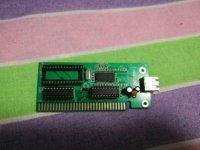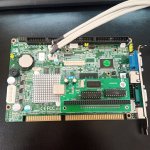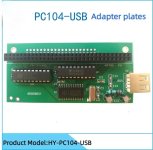I have been looking for an ISA to USB 8bit card for my IBM XT (see picture below). At some point these cards seemed to be around and Lo-Tech had stock (out of stock since I don't know when).
Now the only places I found that these cards seemed to be heavily commented and reviewed are on some Chinese vintage computer sites and their info (translated) is great, But aren't these cards no longer in the circuit of Western Vintage Computing at all? Any one knows where might find the parts or a kit of an assembled one?

Now the only places I found that these cards seemed to be heavily commented and reviewed are on some Chinese vintage computer sites and their info (translated) is great, But aren't these cards no longer in the circuit of Western Vintage Computing at all? Any one knows where might find the parts or a kit of an assembled one?





